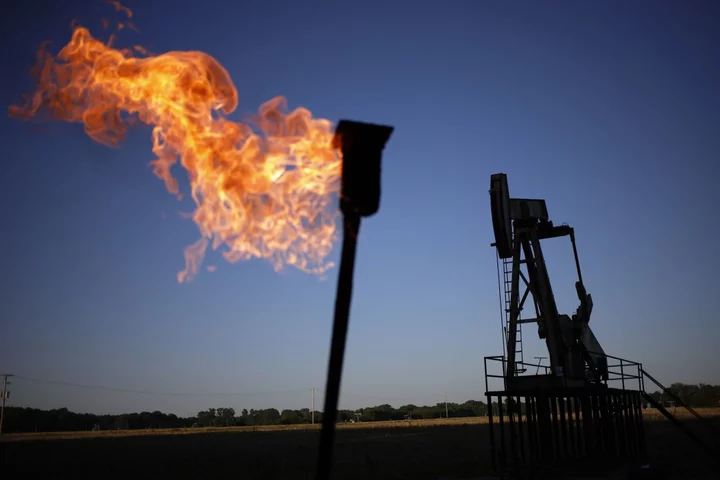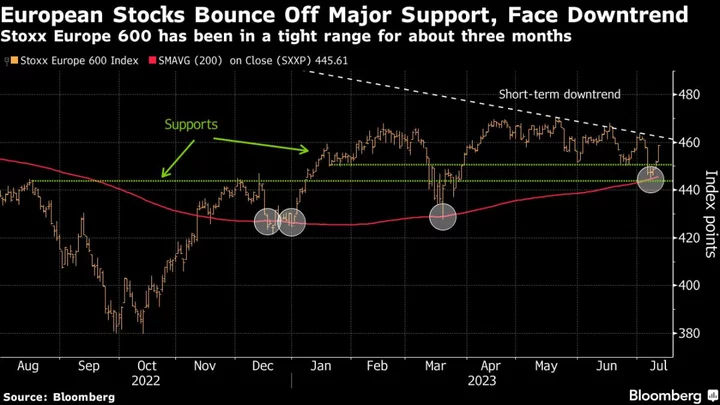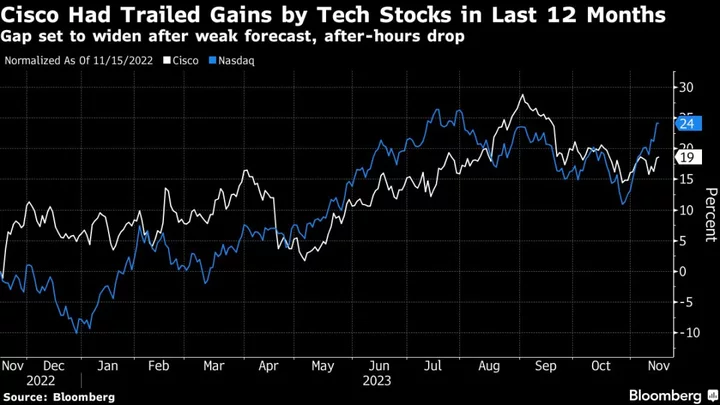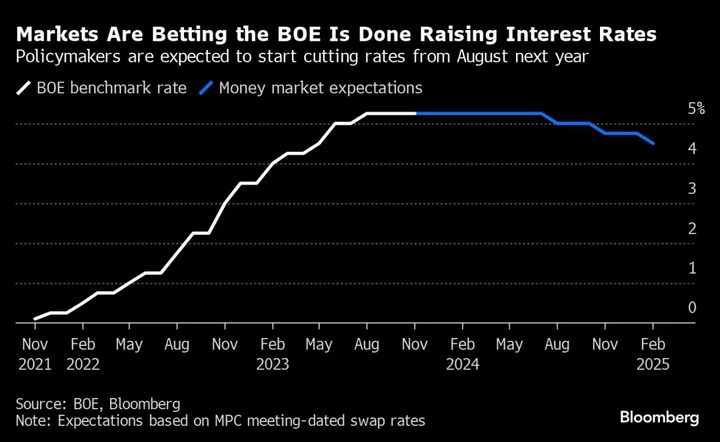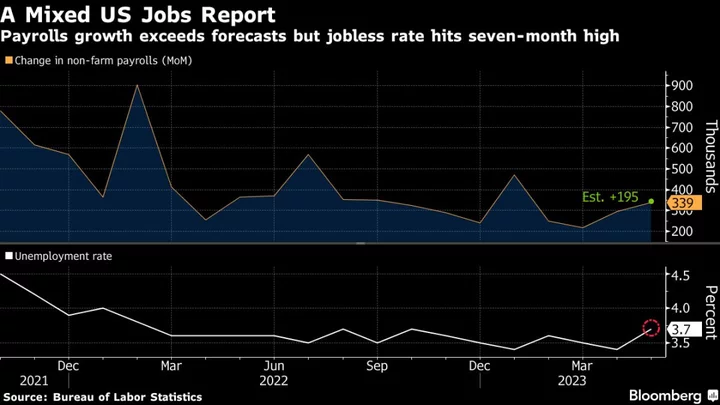Oil traded near the highest level this year after a surge driven by supply cuts from OPEC+ that have tightened the market.
Global benchmark Brent was little changed below $89 a barrel after a five-day advance that lifted futures by more than 5%. US crude counterpart West Texas Intermediate, meanwhile, held close to $86 a barrel.
Crude has rallied by about a quarter since late June as the impact of the supply reductions — which have been led by Saudi Arabia and Russia — worked their way through the market. Riyadh and Moscow are expected to announce their next steps in the coming days, with the cuts expected to be extended.
“The three rounds of production cuts by Saudi Arabia and its OPEC+ partners since September 2022 fully explain the return to a large deficit,” Goldman Sachs Group Inc. analysts including Daan Struyven said in a note, estimating the shortfall at 2.3 million barrels a day this quarter. “The return to deficits, in turn, largely explains the summer rally in timespreads and oil prices.”
Brent’s prompt spread — the gap between its two nearest contracts — has hit 75 cents a barrel in backwardation, up from 58 cents a week ago. That’s a bullish pattern in which near-term prices command a premium to those further out.
The broadly bullish mood has been reflected in comments at the APPEC conference by S&P Global Commodity Insights, which is being held over three days in Singapore this week. Commodities trader Trafigura Group said oil prices could spike as higher interest rates and underinvestment squeeze the market.
To get Bloomberg’s Energy Daily newsletter direct into your inbox, click here.
--With assistance from Yongchang Chin.
Author: Jake Lloyd-Smith

